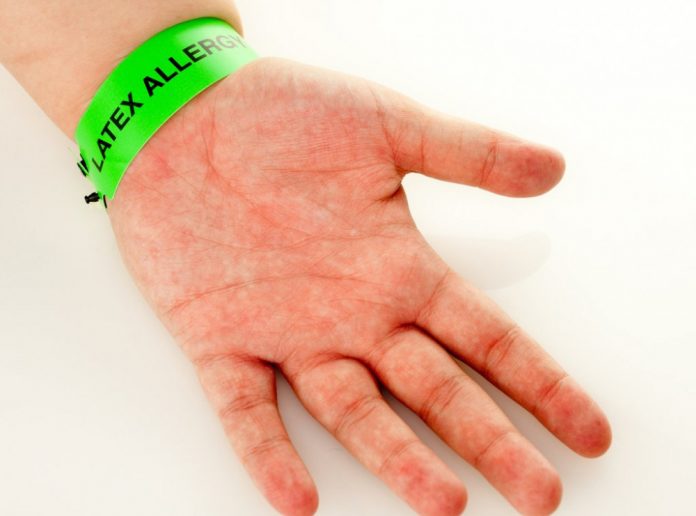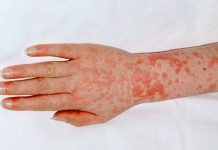Latex is a natural product is found in many products ranging from hair bands, erasers, and condoms, balloons to bra hooks to medical gloves. Latex is made from the rubber tree plant. Depending on manufacturing techniques, latex can be dipped onto a product or molded into it. The difference in manufacturing techniques can be partially responsible for the variety of latex reactions.
Progression of Latex Allergy
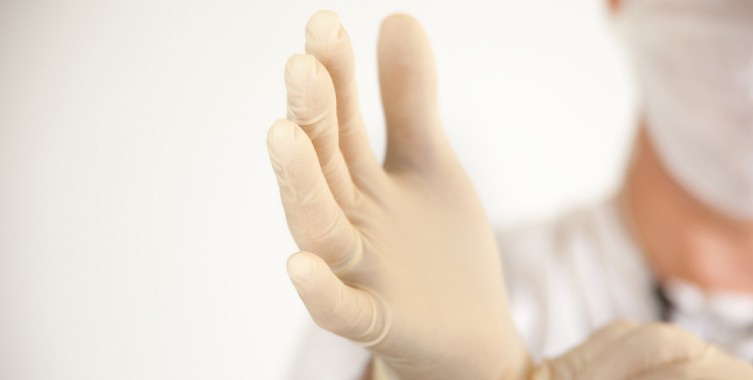
Medical exposure is a cause of most allergic responses and new causes of increasing latex allergy. Staff wearing latex gloves eventually notices dry flaking red skin or irritation. Some develop hives. Powder filled gloves “snapped” on or off may scatter the powder which contains latex into the air and this is inhaled further sensitizing the person to latex and potential allergy. Like-wise, patients undergoing surgery with repeated catheterizations with additional exposure to gloved hands or airborne latex proteins may eventually experience latex allergy with symptoms of nasal discharge, wheezing eyes tearing or similar allergic responses. Most suffer a mild skin reaction but others may experience a full blown anaphylactic reaction. The full-blown anaphylaxis is seldom the fist sign of allergy.
What is a True Allergic Reaction to Latex and How to Know if Allergic to Latex?
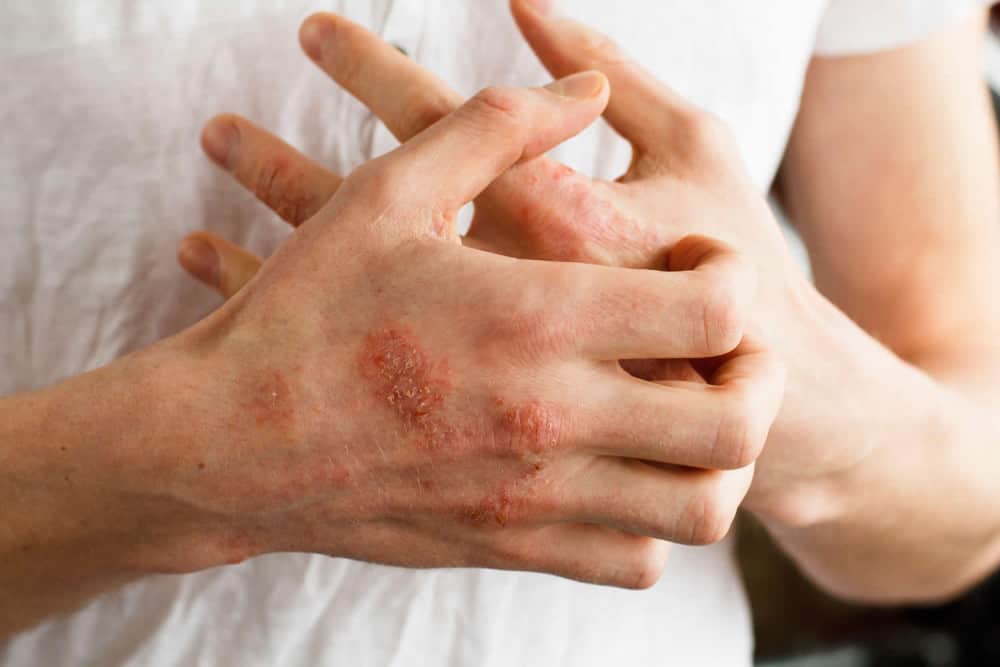
1-6% of the general population might be latex allergic and up to 12% of medical workers may be sensitized to latex. While 1% of the general population may have the extreme reaction, a higher percentage of the hospital population (both workers and regular long time hospital patients) may develop the anaphylactic reaction.
- Dry red itchy skin is a reaction to latex but not an allergy. it is a side effect or skin contact dermatitis or hand eczema. Those who turn red under a band-aid may not have a true latex allergy but have a latex allergic dermatitis reaction. A localized face rash is also contact allergy reaction if the face was touched with the gloved hand. This isn’t true latex allergy.
- Those able to use pencil erasers, rubber cement, baby bottle nipples, snorkels and scuba equipment, athletic shoes, foam rubber, crutches with rubber pads, rubber balls and sports handles made with rubber, probably do not have a latex allergy.
- Those living with carpets based on foam rubber or latex content underlay probably don’t have latex allergy. Those using rubberized non-skid bath and kitchen mats probably aren’t latex allergic.
- Those who have rubber tree plants in their home or garden probably do not have latex allergies.
- Those who have had annual flu shots without problems most likely don’t have latex allergy (only one single brand flu shot of a prefilled syringe by Glaxo Smith has a latex plunger).
- Anyone who has had had difficulty breathing, coughing sneezing or rashes around rubber balls or balloons may have a latex allergy although further reactions in different situations should be evaluated.
- Anyone working around rubber may have developed a latex allergy.
- Anyone in the medical professions or wearing gloves around patients or clients may have developed a latex allergy.
- Anyone who has had multiple surgeries may have developed a latex allergy
- The severe Type I, Ig-E-mediated natural rubber latex allergy reaction may have a connection to food allergy. Those allergic to banana, avocado, or chestnuts may also be allergic to natural latex.
Avoiding Latex to Prevent Allergic Reaction
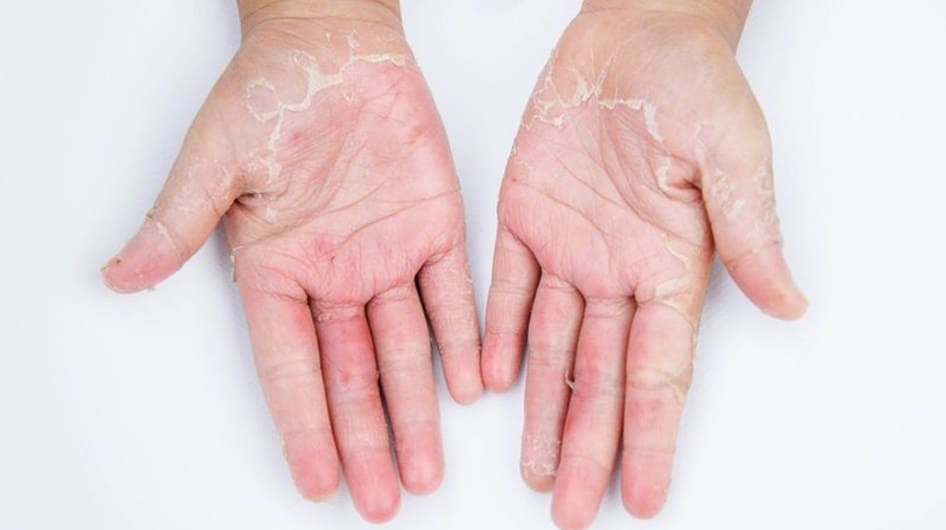
If latex allergy is suspected, avoiding latex seems a simple solution but requires vigilance. Avoid the articles mentioned above. Latex free articles are available.
- Since latex is prevalent in hospitals and hair salons and in many items, labels need to be read.
- Hypoallergenic latex gloves aren’t completely safe. Hypoallergenic gloves simply reduce the exposure to the allergen latex.
- Studies have shown changing to powder free latex gloves has reduced the incidence of latex allergy.
- Washing the hands immediately before using gloves and immediately after removing them helps prevent increasing susceptibility to latex.
- Non-latex gloves usually, but not always come in bright colors such as purple or black and should be used by most medical personnel or beauty service people.
- Synthetic articles have replaced much of latex in medical supplies but latex is a strong a durable product and remains in use.
- Those surely allergic to latex should wear a medical alert bracelet and be sure latex allergy is written clearly on their chart and carry an epi pen.
- Testing for latex allergy is possible.


